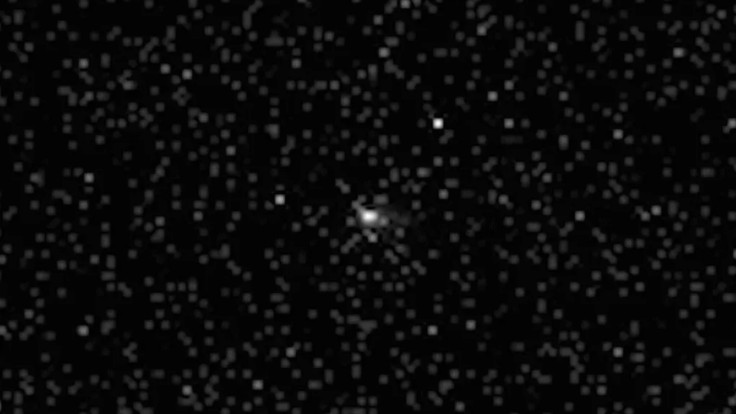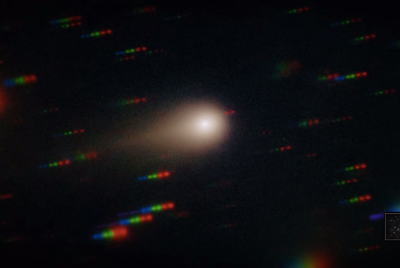Harvard's Avi Loeb Hints 3I/ATLAS 'Jets' Could Be Alien 'Thrusters'
Harvard's Avi Loeb says 3I/ATLAS's 7 'jets' defy a 'normal comet' explanation. Could they be 'thrusters'?

Our solar system has another visitor from the depths of interstellar space. But this object, named 3I/ATLAS, isn't behaving quite as expected. While NASA's acting Administrator Sean Duffy recently suggested the object is 'simply a normal comet', Harvard astrophysicist Dr Avi Loeb isn't so sure. Loeb, who gained international attention for his controversial hypothesis that the first known interstellar visitor, 'Oumuamua, could be an alien probe, argued in a recent interview on Newsmax that the situation is 'not that simple', pointing to several key features that demand more study before anyone can reach a final conclusion.

The Puzzling Jets of 3I/ATLAS
At the heart of Loeb's uncertainty are seven distinct jets of gas or dust streaming from 3I/ATLAS. (This object is only the third interstellar object ever detected passing through our solar system.) On a typical comet, jets are formed when the Sun heats the surface, causing ice to sublimate (turn directly into gas). According to Loeb, however, the jets observed on this interstellar visitor do not fully match what a natural comet usually produces.
He explained that the jets are unusual in their strength and number. Furthermore, the pattern they create is difficult to explain with normal cometary behaviour. Loeb noted that scientists still need to measure the speed and amount of gas in the jets to truly understand what is happening. He said, 'These jets could be ice turning into gas when sunlight hits it. Or, they could be something else, perhaps even something like thrusters'. This latter suggestion, however speculative, is what has drawn significant public attention, given Loeb's reputation for exploring unconventional ideas.

Does the Data for 3I/ATLAS Add Up?
Adding to the puzzle, Loeb shared that he ran a simple calculation that raised even more questions. Based on his findings, a natural comet of this type might not have enough surface area to support the sheer volume of gas flow seen coming from all seven jets simultaneously.
This potential discrepancy between the object's size and its massive outgassing suggests a deeper mystery is at play. It challenges the 'normal comet' hypothesis by implying that the engine driving these jets might be more complex than simple surface ice. As Loeb explained, 'There is definitely a puzzle to be solved'.
3I/ATLAS: A Normal Comet or Something More?
The night before Loeb's interview, Sean Duffy stated he was confident that 3I/ATLAS was a normal comet. Loeb pushed back gently on this idea, cautioning that confidence alone is not a substitute for complete evidence.
Loeb believes that such unusual signs should not be 'quickly dismissed'. Instead, he advocates for scientists to continue examining the object carefully. Just because many experts believe the behaviour is normal, Loeb stated, 3I/ATLAS still shows signs that are hard to match with a natural comet. This echoes the position he took with 'Oumuamua, where he argued the scientific community was too quick to settle on a natural explanation despite its anomalies (like its unusual shape and acceleration).

Beyond Assumptions: The Hunt for 3I/ATLAS Evidence
During the interview, Loeb emphasised that even if many experts agree that 3I/ATLAS is a regular comet, science requires 'clear evidence', not just consensus. He explained that real science is about staying open to learning new things instead of assuming that experts are always right.
For Loeb, it is not enough for the scientific community to simply say, 'The experts believe this.',. Instead, he argued, science should say, 'Here is the evidence, and based on this, we are confident it is a comet.'. Until that level of proof is reached, he believes it is too early to be certain. He added that science works best when researchers stay humble, keep asking questions, and rely on data rather than assumptions.

The Future Watch for 3I/ATLAS
For now, Loeb says the object still contains mysteries. Astronomers will keep watching 3I/ATLAS as it continues its journey through space. They hope new observations will explain what is causing the seven jets, whether the object is truly behaving like other interstellar visitors, and whether all its strange features can, in the end, be explained naturally. Its unusual features, whatever their cause, show how much more scientists still need to learn about interstellar objects and the universe.
As 3I/ATLAS continues its silent journey, the debate it has sparked is far from over. Is it a simple, natural comet, or a more complex object challenging our understanding of the cosmos? The universe rarely gives up its secrets easily, and this interstellar visitor is no exception.
© Copyright IBTimes 2025. All rights reserved.




















